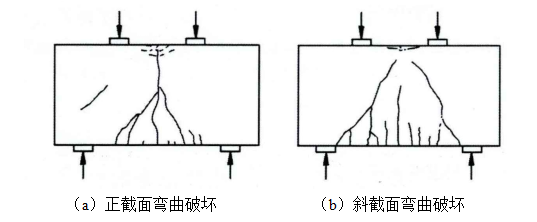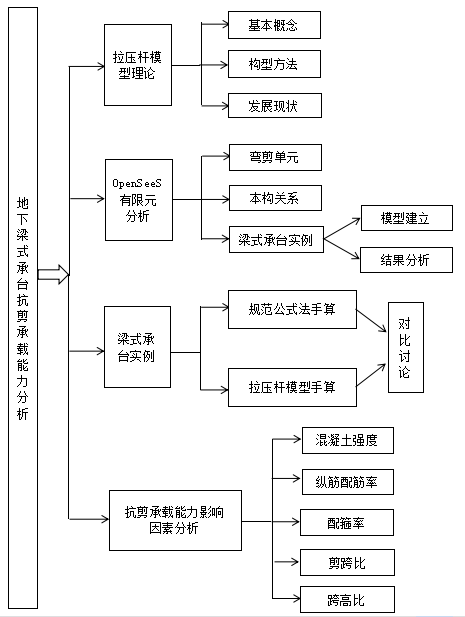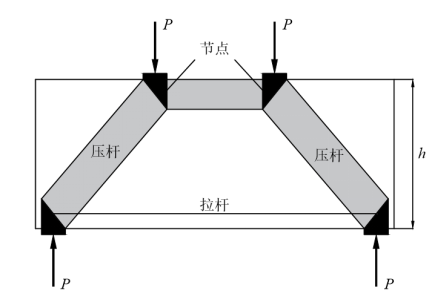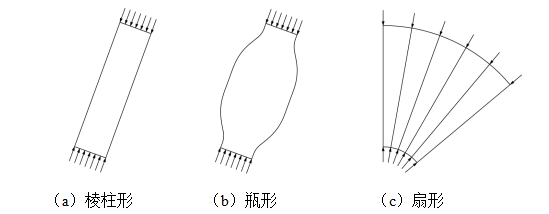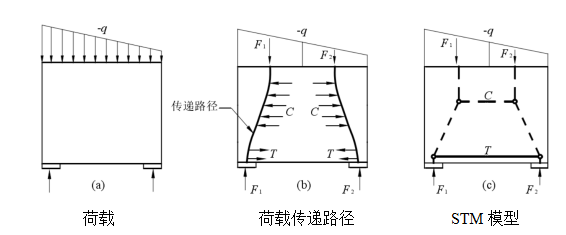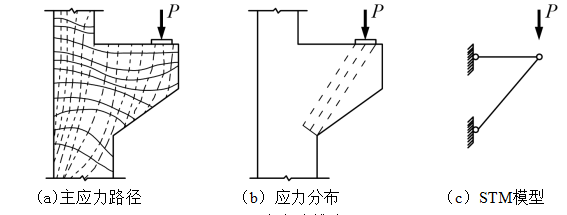地下梁式承台抗剪承载能力分析毕业论文
2020-04-12 16:06:46
摘 要
社会经济在不断发展,人们的生存空间却逐渐被压缩。建筑物变得密集且高大,伴随而来的是建筑物荷载的成倍增加。在解决城市立交桥与其他地下工程的交叉建设问题中,梁式承台因具有跨越能力大,支承性能好的优点而得到广泛的应用。明确承台梁的抗剪性能,对承台梁结构的设计具有重要的指导意义。
梁式承台的跨高比较小,与深梁构件的受力性能相同,故梁式承台通常当做深梁来进行设计。本文首先在广泛查阅国内外规范和资料的基础上介绍了深梁的基本概念、受力性能及破坏形态,并对目前深梁抗剪理论进行了对比分析,确定采用拉压杆模型方法和基于我国《混凝土结构设计规范》中提出的经验公式法来分析深梁的抗剪承载力。以宝丰路段26号桥墩的承台地梁为工程背景,完成了地梁的正截面受弯承载力、斜截面受剪承载力和局部受压承载力计算,得到了该结构的抗剪承载能力,并对比分析了拉压杆模型法和我国规范公式法的计算结果的差异。其次,基于有限元分析软件OpenSees中考虑弯剪耦合的dispBeamColumnInt单元,对该深梁结构进行了有限元分析,得到了该结构的极限承载能力,并与拉压杆模型法和我国规范公式法的计算结果进行了对比,验证了有限元分析模型的可行性。最后,基于前述有限元模型对该深梁结构进行了参数模拟分析,分别讨论了混凝土强度、纵筋配筋率、配箍率、剪跨比、跨高比等重要参数对深梁抗剪承载能力的影响规律。
分析表明,混凝土强度、纵筋配筋率、剪跨比是影响深梁构件抗剪承载能力的重要因素。具体来说:随着混凝土强度的增加,深梁的抗剪承载能力会有显著的提高,但提高的幅度随着混凝土强度的增加而逐渐减小;纵筋的配筋率增大时,构件的抗剪承载力也有明显提升,但当配筋率达到0.5%时,提升的幅度减缓。考虑到让钢筋充分发挥性能,进行设计时应将纵筋配筋率控制在0.5%左右;随着配箍率的增大,构件承载力会有小幅度的提高;当剪跨比为0.5时,即集中荷载作用于跨中时,构件的承载力最低,剪跨比增大或减小,均会显著地提高构件的承载力;跨高比由小变大的过程中,深梁抗剪承载力先增加,后减小,存在峰值点,当跨高比l0/h在1.6左右时,构件的抗剪承载能力达到峰值。通过本文的研究,我对深梁的非线性有了更深的理解,掌握了利用拉压杆模型对深梁构件进行设计及验算的方法,同时,通过对OpenSees的学习,提升了我利用软件进行数值模拟分析的能力。
关键词:钢筋混凝土深梁;抗剪承载力;拉压杆模型;OpenSees有限元分析;影响因素
Abstract
With the continuous development of social economy, people's living space is gradually being compressed. Buildings become dense and tall, accompanied by a multiplication of building loads. In solving the problem of cross construction of urban overpasses and other underground projects, beam caps have been widely used due to their advantages of large spanning capacity and good supporting performance. It is of great significance for the design of the platform beam structure to specify the shear performance of the platform beam.
The span-depth ratio of beam bearing platform is small, and its mechanical performance is the same as that of deep beam members. Therefore, beam bearing platform is usually designed as deep beam. Firstly, on the basis of literature and codes at home and abroad, the basic concept of deep beam, mechanical properties and the failure pattern, and shear theory are introduced. Based on contrastive analysis of deep beam shear theory, the Strut-and-Tie model method and empirical formula method proposed by the current standard of concrete structure design of our country are adopted to analyze the shear capacity of deep beam. Taking the foundation beam of Baofeng Road No.26 pier as the engineering background, the flexural bearing capacity of normal section, local compression bearing capacity of oblique section and the shear bearing capacity are calculated, and the results of Strut-and-Tie model method and empirical formula method are compared. Secondly, based on the finite element analysis software OpenSees, the ultimate bearing capacity of the structure is studied by using the dispBeamColumnInt element with the coupled effects of bend and shear. The results of the finite element method are also compared with that of the hand calculation to verify the feasibility. Finally, based on the finite element model of the structure, the influence parameters analysis is performed, respectively including the concrete strength, longitudinal reinforcement ratio, stirrup ratio and shear span ratio.
The analysis shows that the strength of concrete, reinforcement ratio of longitudinal reinforcement and shear-span ratio are important factors influencing the shear capacity of deep beam members. It is shown that as the concrete strength increases, the shear strength of deep beams will increase significantly, but the magnitude of increase will gradually decrease as the strength of the concrete increases; when the reinforcement ratio of longitudinal reinforcement increases, the shear capacity also increases significantly, but when the reinforcement ratio reaches 0.5%, the increase is not obvious. Considering that the steel bar should be fully functional, the longitudinal reinforcement ratio should be controlled at about 0.5% when the design is performed; the bearing capacity of the component will increase slightly with the increase of the stirrup ratio; when the shear span ratio is 0.5, that the concentrated load acts on the mid-span, the bearing capacity of the components is the lowest, and the shear-span ratio increases or decreases, all of which will significantly increase the bearing capacity of the components. In the process of increasing the span-to-height ratio, the deep beam shear bearing capacity increases first and then decreases with a peak point. When the height-to-height ratio l0/h is around 1.6, the shear capacity of the component reaches its peak value. Through the study of this paper, I have a deeper understanding of the nonlinearity of deep beams, and have mastered how to design and verify deep beam components using the tension and compression bar model. At the same time, learning on the OpenSees improves my ability to conduct numerical simulation analysis with software.
Key Words: reinforced concrete deep beams; shear capacity; Strut-and-Tie model; OpenSees finite element analysis; influencing factors
以上是毕业论文大纲或资料介绍,该课题完整毕业论文、开题报告、任务书、程序设计、图纸设计等资料请添加微信获取,微信号:bysjorg。
相关图片展示:
